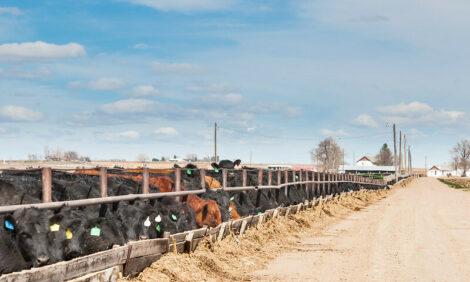



Beef Capitalises On Lean Power
US - Gone are the days when healthy or convenient food is synonymous with “bad-tasting.” When it comes to beef, you can get good taste and a lean, tender, healthy product all in one, says the Beef Checkoff Programme.“The rules have changed,” John Lundeen, executive director of market research for the Beef Checkoff Programme, told meat processors, manufacturers and retailers at the 2010 Innovative Beef Symposium in Denver last week.
“We continue to see growing demand for tasty new ways to cook lean, healthy beef quickly,” he continued, noting that the beef checkoff persists in uncovering products that meet those demands.
Mr Lundeen’s comments came as he helped unveil six new cuts from the beef round, developed in Phase 3 of the checkoff’s muscle profiling research. Phases 1 and 2 resulted in new cuts from the shoulder clod and the chuck roll.
According to consumer research, the key drivers for consumer beef purchases include safety, convenience, ease of preparation, good value, ‘a taste my family craves’, a lean cut, and a versatile cut that everyone in the family likes, Mr Lundeen said.
All six new cuts – the Sante Fe Cut; Round Petite Tender; San Antonio Steak; Tucson Cut; Braison Cut; and Merlot Cut – qualify as ‘lean’ or ‘extra lean’ by USDA guidelines, and all have passed a multitude of taste and tenderness tests.
“There’s a resurgence in consumers interest in protein, too,” Mr Lundeen said, “so these new lean, tender cuts are right on target.” And their convenience is key, since 80 per cent of meals are prepared in 20 minutes or less and 75 per cent are cooked in 30 minutes or less. (The NPD Group/Dinner Mealscape, data period May 2003-April 2004).
Dr Shalene McNeill, executive director of nutrition research for the checkoff, said the fact that all of the new cuts derived from the round are lean is extremely good news for consumers who might still question beef’s nutritional profile.
“Nutrition remains the key barrier for beef, as nutrition is the No. 1 reason consumers cite for eating less beef,” McNeill told symposium participants. “But today, more than 90 per cent of saturated fat in the diet comes from food other than beef.
“Most Americans just don’t understand how much fat we’ve taken out of beef, simply through close trimming,” she added. “In fact, cuts from the chuck, rib, loin and round have 34.68 per cent less separable fat than is reported in the National Nutrient Database. Checkoff research gives us this information to provide evidence for nutritional labeling and dietary guidelines.”
During the last decade, Dr McNeill pointed out, the beef industry has gone from representing six cuts that qualified as ‘lean’ to 35 today, with the inclusion of these latest additions. For example, she said, the beef tenderloin has less cholesterol than a skinless chicken breast – and that’s the kind of message that consumers need to receive.
“Beef’s health and wellness opportunity is about capitalizing on the Power of Lean,” Dr McNeill said.
TheCattleSite News Desk


